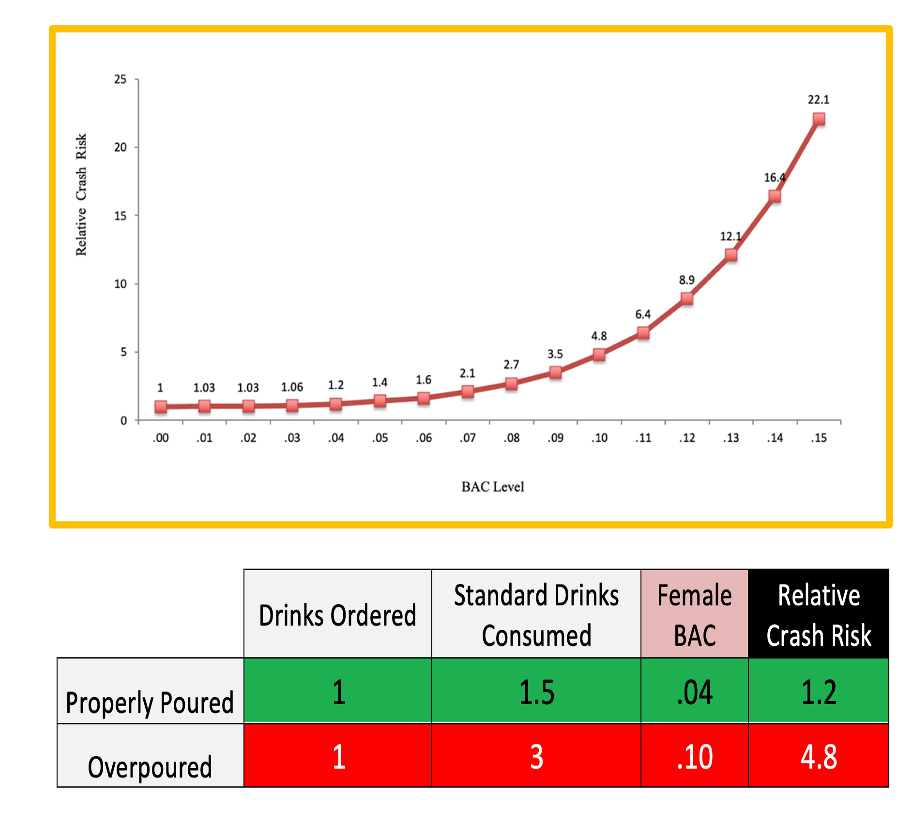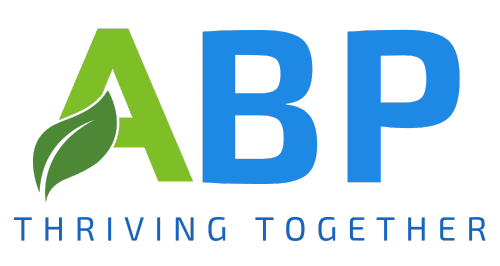Profitable Pouring Guards the Customer & Community

(3rd in the "It’s Not Magic, It’s Math" series)

Short on Time? Skip to the Recap Below!
How Overpouring Affects Customer BAC
While it’s easy to appreciate how not giving a customer a more potent alcoholic drink (from overpouring) results in a lower BAC level, let’s take a look at just how much of a difference it makes.
The charts below demonstrate how overpouring increases the average BAC inside a business. The calculations are based on a business full of average-sized males (195-pound) who ordered and consumed, on average, three vodka tonics (a popular one-spirit cocktail) over two hours.
The left shows a BAC distribution chart when the vodka tonics were properly poured. The mean BAC is .03 percent (standard deviation .02). Only 4 percent of the customers have a BAC at or above .08 percent.
On the right is a BAC distribution chart for when the vodka tonics were overpoured by 42%. The mean BAC is .06 percent (standard deviation .03). Now, 40 percent of the customers have a BAC at or above .08 percent.

Charts for average-sized females (165-pound) who ordered and consumed, on average, two vodka tonics (versus three for males) over two hours, show similar BAC distributions:
AVG drinks consumed: 2 3.15
Mean BAC .04 percent .08 percent
Patrons .08+ BAC 7 percent 50 percent
The charts reflect common sense: When customers get significantly less alcohol in their drink because bartenders properly pour the cocktail, customer intoxication goes way down. When customers are less intoxicated, problems and calls for service go down.
Why It Matters
Research and experience confirm that overconsumption leads to:
- Increased aggression and severe injuries: Moderate drinkers are less prone to injury and violence than heavy drinkers.
- Higher insurance claims: According to insurance broker Sandy Baldinger, 99% of claims from alcohol-serving businesses stem from excessive consumption.
- More dangerous DUI incidents: In 70% of fatal DUI crashes, the driver’s BAC was 0.15% or higher.
Drinkers Spend Less to Reach Dangerous Levels of Intoxication
The table below shows how many vodka tonics an average-sized male would need to consume (and spend) over three hours to reach a BAC of .15%, if the drinks were properly poured versus overpoured.

Common sense and price elasticity studies tell us that for most people, the more they need to spend to drink, the fewer drinks they purchase.
If that male customer ordered six vodka tonics and the drinks were not overpoured, his BAC would be .08% (versus .15%), and he and others would be significantly safer when he drove.
Secret shoppers often find bartenders overpouring multi-spirit cocktails, especially the three- and four-spirit ones, by 100% or more.
Let’s examine the increased risk an average-sized female (165#) is exposed to thirty minutes after finishing one Adios cocktail.

After consuming one overpoured Adios, she is now four times more likely to be involved in a vehicle crash than an average-sized female who consumed a properly poured Adios.
Upcoming in the It’s Not Magic, It’s Math series:
- Case Study: Overpouring Eliminated
- My $14,000,000 Mistake
- The People Behind the Numbers



